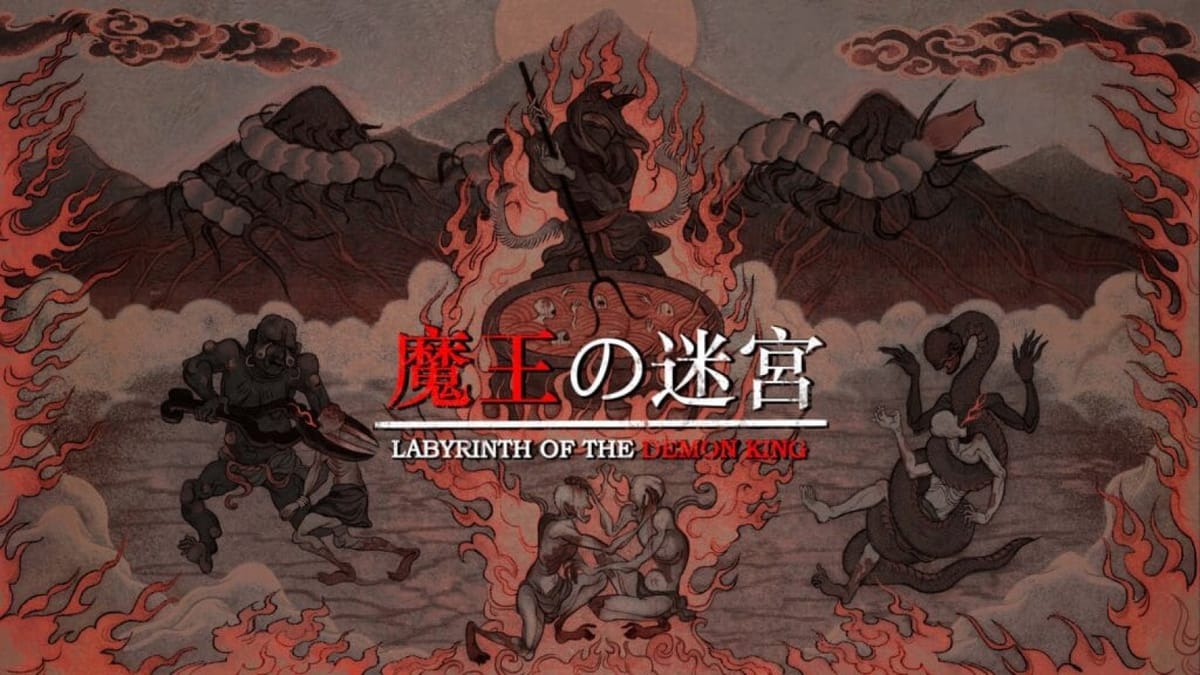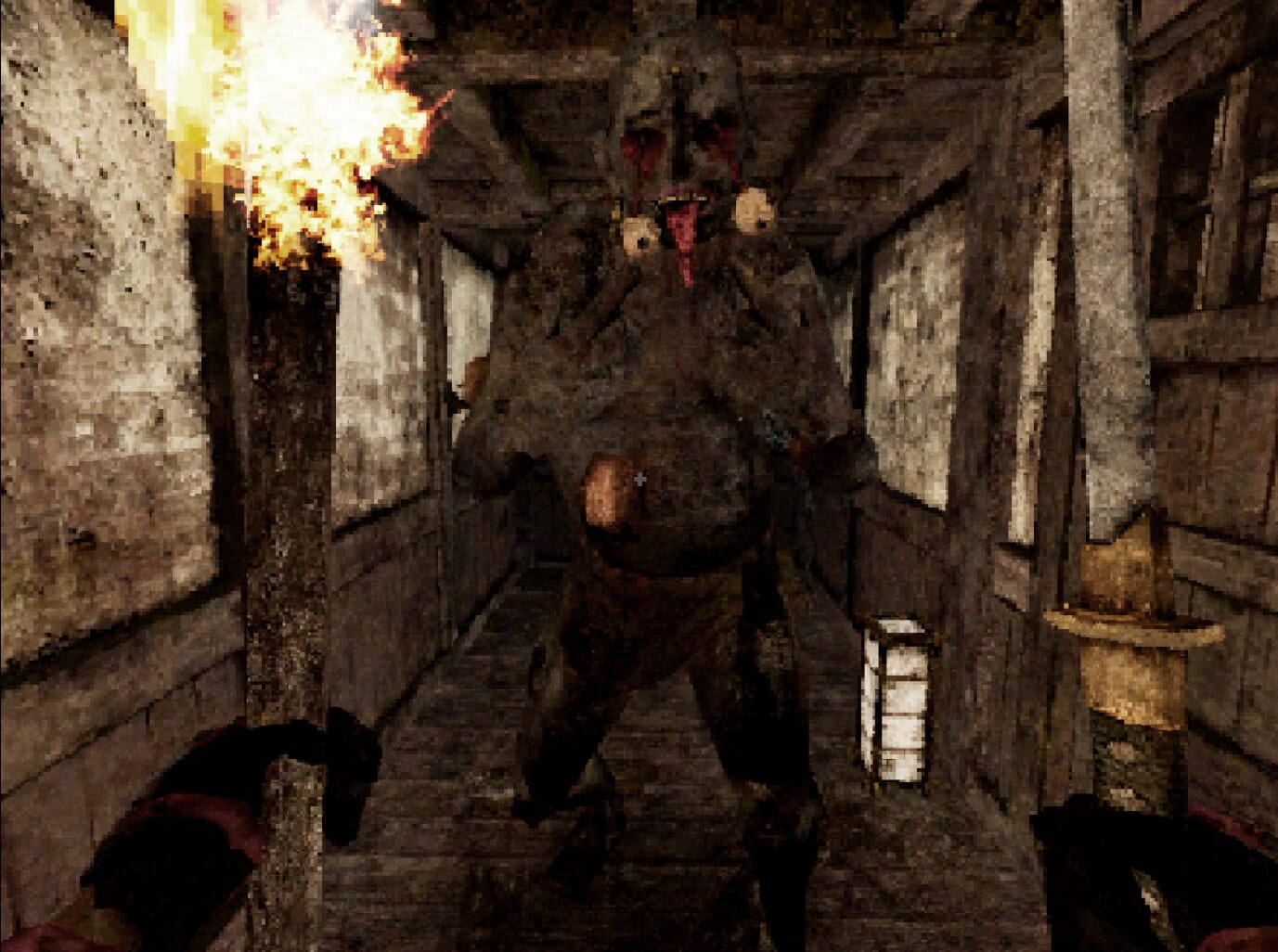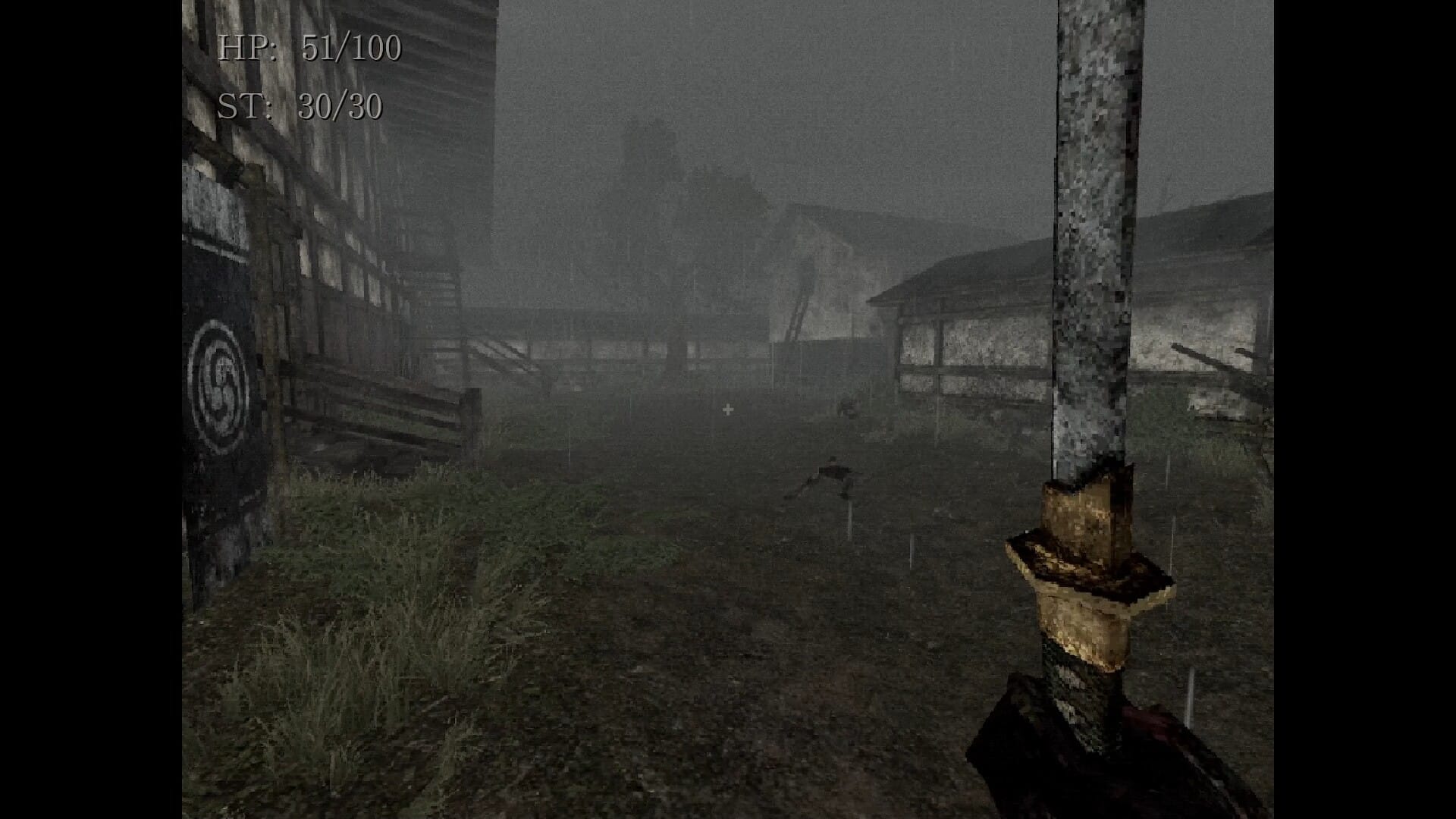
Oppressive. Alienating. Brutal. These are words that I’ve banned from usage for the remainder of this review, for if I could use them, I would surely abuse them in every sentence. Labyrinth of the Demon King is a first person dungeon crawling survival horror game, featuring bru - uh, visceral melee combat and PS1-era graphics. The game was made by a solo New Zealand-based developer, JR Hudepohl, who was inspired by a trip to Kitagi Island, Japan during COVID. He says that the eerie, nearly abandoned buildings in the winter snow felt like the perfect setting for a horror title, and his game became a reality not long after. While JR nailed the crushing ambiance he was going for, his execution of the game’s combat and puzzles languish in the game’s second half.

The story isn’t particularly deep, but it serves as an apt backdrop for a horrific world overrun by monsters from Japanese folklore. You play as a lowly footsoldier on a path to avenge the death of your Lord, bringing you to the steps of the Demon King’s stronghold. From there, you’ll navigate through a maze of dank, decrepit hallways and a smorgasbord of staircases, learning about each of the eight great hells along the way. Though lore notes are few and far between, the ones that you do come across are often filled with explicit depictions of hellish torture. It all makes for a sufficiently heinous setting for severing demon heads, but don’t expect any twists or fleshed-out characters (unless you mean characters with their disgusting flesh out, of which there are plenty).
The most notable feature of Labyrinth is its delightfully vile visual style. Many developers have attempted to reimagine the PS1 graininess in the last half-decade or so, but none have done it as gruesomely as this. The game’s indoor areas overwhelm the player with greys and browns and blacks with the occasional splash of dull colour being the only respite from oppre - uh, relentless darkness. Labyrinth also makes no attempt to modernize its charmingly ugly UI, keeping the same clunkiness it would have if the game were actually made in 1994. Everything feels authentic, as if this game were a cursed relic dug up from beneath an abandoned GameStop. Of course, the game does run at a smooth 60fps, but that’s one of its only concessions to contemporaneousness (and a welcome one, at that).
Labyrinth’s cutscenes are another beast entirely. They feel like you should not be watching them, like snuff films that depict something you can’t quite make out but you know you’ll end up having nightmares about for weeks. The audio design is equally disturbed and distorted, but not so distorted that the sound of squelching and ripping is unrecognizable. The scenes will often do nothing but wordlessly introduce a new character or enemy, yet they’re sure to leave an impression on any player unprepared for how far one can go within the constraints of PS1-like pixels. Think Resident Evil’s iconic moment where we see a spooky zombie turning towards us - with 30 extra years of knowledge on how to amplify the horror.

The combat is largely parry-based, requiring an intimate understanding of the game’s modest cast of enemies in order to get your block/swing/kick timing right. The game uses a rather unforgiving stamina system; it takes little effort to deplete and takes what feels like forever to recover, forcing you to carefully consider each attack you make. It’s easy to get overwhelmed by the demons’ high damage output at first, but with practice comes the satisfying result of being able to tackle enemies without taking any damage at all. Labyrinth also features a more unique way to mitigate its own difficulty: if you end up in the seemingly terminal position of having multiple demons chasing after you, more often than not, they’ll begin fighting each other, completely ignoring you. This makes the world feel more alive, as if these demons would be perusing the halls of the stronghold, looking for things to crush regardless of your presence.
There are plenty of different weapon types, each with stats that determine their damage and swing speed. For me, speed was key. I enjoyed the cadence of parry - swing - swing; many of the slower weapons barely allow for one punishing hit post-parry which felt too sluggish for my taste. The game also offers a bow that I only ended up using once - it was too cumbersome to rummage through my inventory every time there was an enemy in the distance. Your only other combat option is a set of consumable talismans, each with their own unique effects like mass knockback or a ranged summon - once again, as a sword purist in these kinds of games, I used these only in the most dire of circumstances. The melee dance with your opponents is simply the most fun you can have with combat; a mix of improvisation and familiarization that’s more in depth than one might expect.
…Except when it comes to bosses. The game’s five bosses need to be reworked, as they seem to be fundamentally designed with a different combat system in mind. Each one can be handled with more ease than any basic enemy: they swing, you parry, you swing. Repeat until dead. You are entirely capable of standing still right in front of a boss’ face, parrying their slow, singular up-close attack, and depleting their health bar in seconds. Was this the intended way to fight them? Surely not. Is there any motivation to fight them some other way? Unfortunately, not that I can tell. The only boss with a slight variation is one that spawns a handful of the game’s most annoying enemies throughout the fight - not exactly a great alternative. It’s disappointing considering the potential of the parry system. I’m not asking for Sekiro-level parry combos, but literally any variety would have done a lot to break the monotony of these fleeting fights.

Sadly, this feeling of repetition and fatigue is not limited to the bosses. The game is split into four towers, with the first one, the ironically-titled Tower of Repetition, taking up roughly half of your playthrough. If the game were relegated to exclusively this area, I would have far fewer complaints. It would be a breezy, uniquely unpleasant experience that put together a fun little Resident Evil-esque building to get hopelessly lost in. Labyrinth does not end there, of course - instead it continues with three shorter towers, each with their own puzzles to solve, enemies to fight, and keys to acquire.
At this point, the game immediately becomes tedious. Save for a lovely (as much as anything in Labyrinth can be considered lovely) hub area being unlocked, this back half has nothing to offer but more of the same. Despite the fact that the game continues to throw new weapons your way constantly, the combat has grown stale. No variety of katana is going to make slashing through a skeleton with two attacks any more interesting. The puzzles suffer from a severe case of backtracking-itis, made all the more egregious by the agonizingly long animations to ascend a staircase or go through a door. If the game is going to drop its identity as a PS1 game by being 60fps, I see no reason why it couldn’t have included a way to skip these agonizing transitions, as well. Sometimes these archaic restrictions on game design are just that - archaic restrictions. There’s no need to recreate everything for nostalgia’s sake, just the things that are actually worth remembering.

Labyrinth is at its best when it’s trying to be as aliena - uh, uninviting as possible, using this sense of abject rejection to motivate you to delve deeper into its repulsive secrets. The issues only start to arise when the game runs out of ideas, spinning its wheels as it limps to a close. The minutes prior to the final boss were suddenly exhilarating and had me engaged for the first time in hours - only for the Demon King to fall to my blade using the same simplistic strategy as the rest. In an era where everyone seems to be begging for more bite-sized experiences, Labyrinth should’ve been a layup but instead gets lost in its own maze. A perfect three hour game cannot be doubled to create an equally perfect six hour game. Labyrinth stumbles a little too early for it to be truly great, but it’s still worth experiencing the game’s lovingly crafted, absolutely miserable vibes.
Labyrinth of the Demon King
Good
Labyrinth of the Demon King impresses with its crushing atmosphere and rewarding combat but falls victim to a dearth of novel ideas in its latter half.
Pros
- The cruelest vibes around
- Weighty, rewarding combat
- Skin-crawling sound design
Cons
- Some of the simplest bosses ever crafted
- Tedious backtracking
- Too long to stay interesting the entire time
This review is based on a PS5 copy provided by GamingTrend.
